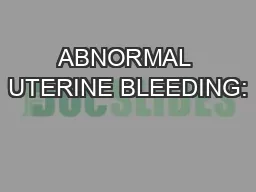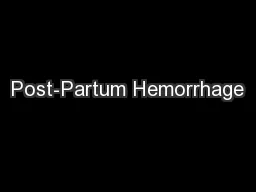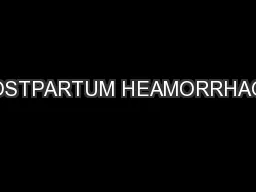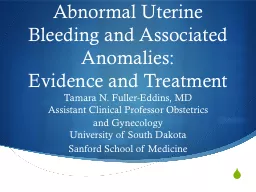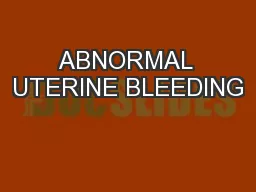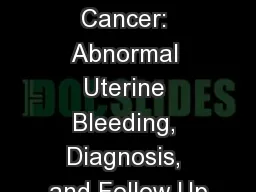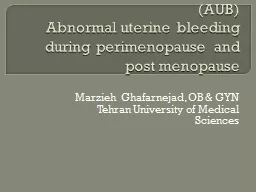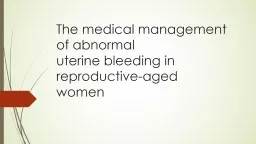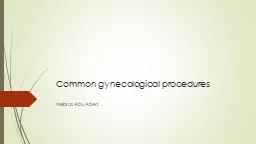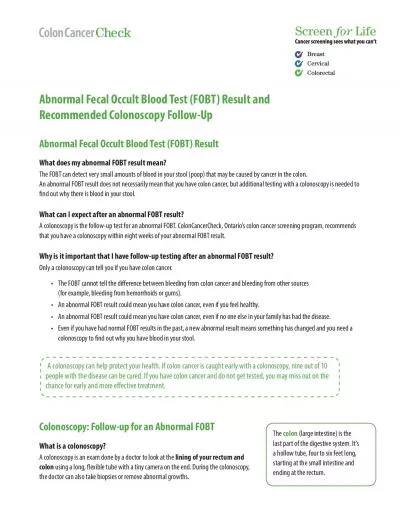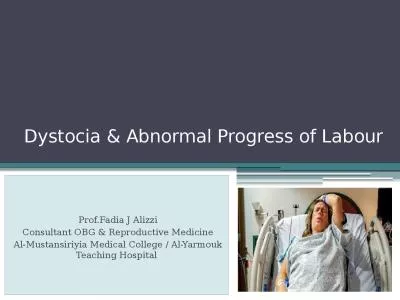PPT-ABNORMAL UTERINE BLEEDING:
Author : tawny-fly | Published Date : 2016-08-07
GUIDE TO DIAGNOSIS AND TREATMENT Anita Showalter DO FACOOG Dist Assistant Dean of Clinical Education Associate Professor and Chief Division of Womens Health College
Presentation Embed Code
Download Presentation
Download Presentation The PPT/PDF document "ABNORMAL UTERINE BLEEDING:" is the property of its rightful owner. Permission is granted to download and print the materials on this website for personal, non-commercial use only, and to display it on your personal computer provided you do not modify the materials and that you retain all copyright notices contained in the materials. By downloading content from our website, you accept the terms of this agreement.
ABNORMAL UTERINE BLEEDING:: Transcript
Download Rules Of Document
"ABNORMAL UTERINE BLEEDING:"The content belongs to its owner. You may download and print it for personal use, without modification, and keep all copyright notices. By downloading, you agree to these terms.
Related Documents

